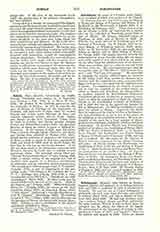

Schonborn, the name of a German noble family, many members of which were prelates of the Church.
(I) JOHANN PHILIPP VON SCHONBORN, Archbishop of Mainz and Bishop of Wurzburg and Worms, b. at Eschbach in the Westerwald, August 6, 1605; d. at Wurzburg, February 12, 1673. When sixteen years old he became a cleric (an expectant for a canonicate) at the cathedral of Wurzburg, and in 1625 at that of Mainz. He became cathedral canon at Wurzburg in 1629, and at Worms in 1630. In 1635 he was made provost of Kronberg and of St. Burkard at Wurzburg. On August 16, 1642, he became Bishop of Wurzburg (deacon, 1642; priest, 1645); on November 18, 1647, he was made Archbishop of Mainz, and in 1663 Bishop of Worms. His foreign policy was mainly directed towards the maintenance of peace, but this policy did not always meet with approval and often failed in its object. On the other hand his administration of all domestic affairs was excellent, and as a ruler he was not below the best of his era. His contemporaries gave him the honorable titles of “The Wise”, “The German Solomon“, and “The Cato of Germany“. He succeeded in repairing the injuries inflicted upon his domains by the Thirty Years’ War, settled the disputes as to territory with the neighboring rulers, reorganized the higher civil service, and improved the administration of justice. To compensate for the scarcity of priests and to raise the standard of the secular clergy, he called to Mainz and Wurzburg the Bartholomites, an institute founded by Bartholomew Holzhauser (Institutum clericorum saecularium in communi viventium); in 1654 he transferred to them the administration of the ecclesiastical seminary at Wurzburg, and in 1660 also that of the gymnasium founded by him at Munnerstadt. In 1662 he established a seminary for priests at Mainz. Urged by the Jesuit Spee, he suppressed the trial of witches in his domains, and thus contributed, as far as was in his power, to the abolition of this miserable delusion. He was surrounded at his court by a large number of distinguished men, statesmen, diplomats, scholars, and pious ecclesiastics. (2) LOTHAR FRANZ VON SCHONBORN, nephew of the above, was Archbishop of Mainz (1695-1729) and Bishop of Bamberg (1693-); (3) DAMIAN HUGO PHILIPP VON SCHONBORN was Prince Bishop of Speyer (1719-43) and of Constance (1740), and was also a cardinal. He did much for the Diocese of Speyer, and was conspicuous for his culture, learning, and piety; (4) FRANZ GEORG VON SCHONBORN was Archbishop of Trier (1729-56) and Bishop of Worms (1732-). Both Frederick the Great and Maria Theresa praised him as an excellent ruler. (5) JOHANN PHILIPP FRANZ VON SCHONBORN was Bishop of Wurzburg (1719-24). (6) FRIEDRICH KARL VON SCIONBORN was Bishop of Bamberg and Wurzburg (1729-46). The last three prelates were brothers, and nephews of Lothar Franz. (7) FRANZ VON SCHONBORN, b. at Prague, January 24, 1844; d. June 25, 1899. He became Bishop of Prague in 1885, and was created cardinal in 1889.
KLEMENS LOFFLER

